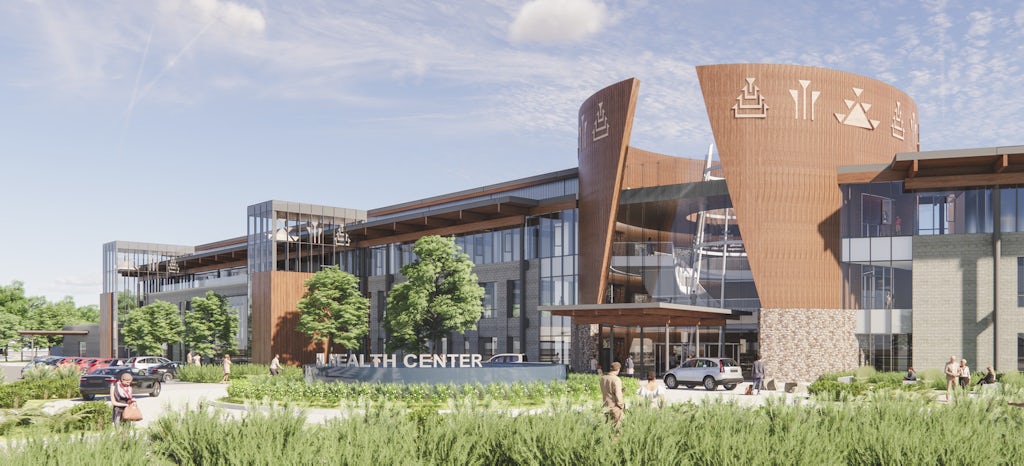LPA leaders discuss a new healthcare paradigm that promotes a holistic approach to health and wellness for community members
LPA Director of Healthcare Muhsin Lihony and Project Designer Ozzie Tapia recently led a presentation on “Integrating Healthcare with Wellness” at the Healthcare Design Expo and Conference in Cleveland, Ohio, which brought together professionals from across the country.
Their panel focused on strategies to effectively integrate wellness into healthcare design, and the benefits for patients, providers, and the community. Here are a few key takeaways from the presentation:
The Responsive Facility
“The traditional hospital office tower is behind us,” Lihony told the attendees.
The reimagined healthcare center will focus on technology, health and wellness and the ability to quickly respond to different conditions. It supports stronger connections between providers and patients, while offering an amenity that promotes a healthier lifestyle among employees and community members.
“It’s now patient-centric,” Lihony said.
In the new model, wellness becomes an active component of care that enhances psychological, cognitive, physical and social well-being. Nap pods, physical therapy space, farmers markets offering fresh food, fitness rooms, natatoriums, and space for workout classes are all important amenities for addressing the community’s wellness.
Wellness and technology are combined with elements of the traditional patient experience, including UV sanitization stations, drive-through pharmacies, no-touch check-in and virtual exam rooms that screen patients before thay are directed to a provider. Open, centralized co-lab spaces can provide areas for physicians to collaborate, while information on patients is readily available on movable, smart-screen walls.
Green space that promotes a greater connection to the outdoors is another critical component of enhancing wellness and improving care. A naturally vented atrium can cut operating costs for facilities while offering fresh air and natural light for users.
Flexibility and Adaptability
Creating a design that is easily adapted to changing wellness and healthcare trends, as well as emergencies and health crises, is one of the success factors on any project.
With a more flexible design, acuity-adaptable exam rooms can be easily reconfigured into private rooms during a crisis – which doubles the number of available rooms. Pressurized modular units can be attached to the main facility, creating a secure, scalable zone to treat patients. Operable glass folding walls can open up to outdoor spaces that safely accommodate small groups for meetings and appointments.
“We’re designing multi-functioning facilities to ensure that if we are challenged by another pandemic in the future, they could accommodate the level of care needed without stopping the non-pandemic related care services,” said Lihony.
A more flexible model also creates efficiencies such as shared hallways, lobbies, restrooms, physical therapy, and other spaces. Less square footage is needed when healthcare and fitness/wellness facilities are combined, resulting in a smaller footprint with more usable program space.
Community Integration
The new paradigm for healthcare facilities includes space designed specifically for the community, whether it’s events, fitness and wellness offerings or preventative healthcare workshops.
“It’s about having a partnership not just with the users, but community members that utilize the facility,” Tapia said.
LPA’s design of the Redding Rancheria Tribal Health Village goes beyond a typical health facility to address the tribes’ desire to bring the community together and improve overall well-being. The facility combines a 70,000-square-foot outpatient clinic with a 90,000-square-foot wellness center, including a gymnasium, natatorium, outdoor swimming pools, and hydro and physical therapy facilities. By bringing health and wellness elements together under one roof, the tribe is taking a holistic view to providing a continuum of care to its 10,000-plus members.
“Sometimes there is a stigma around going to a healthcare facility,” Tapia said. “This is a way of bringing amenities to people in a more comfortable environment with social components and active wellness.”
The community members working at the facility also see the immense advantages of working in a healthier environment, which Lihony points out benefits clients from an employee retention and productivity standpoint.

















